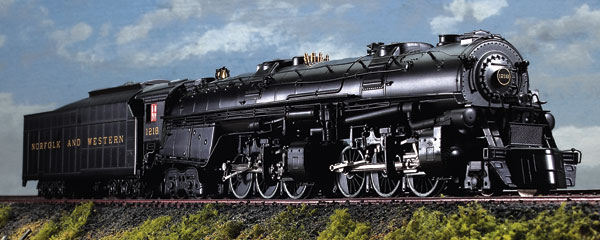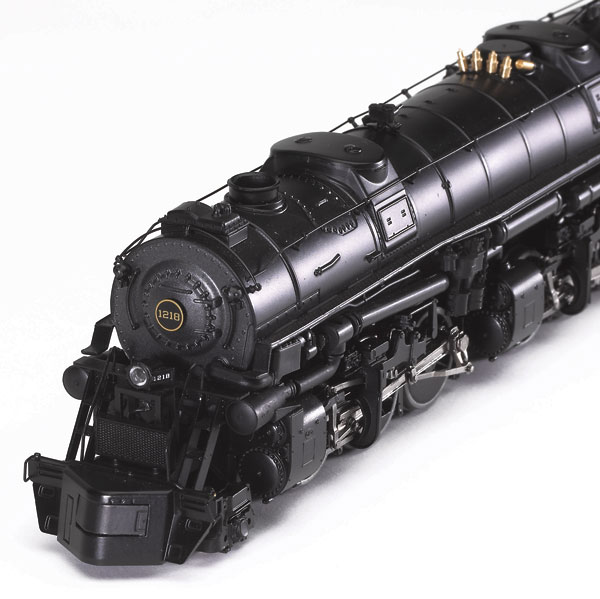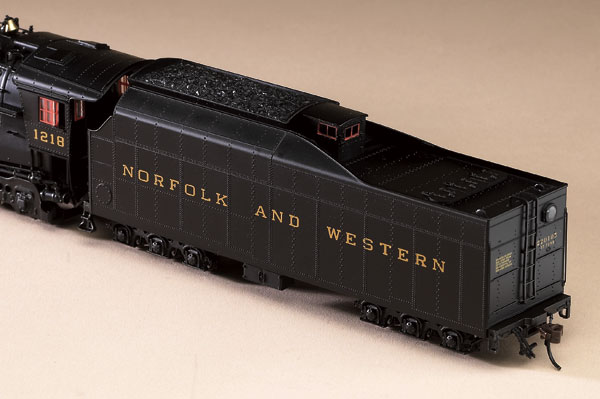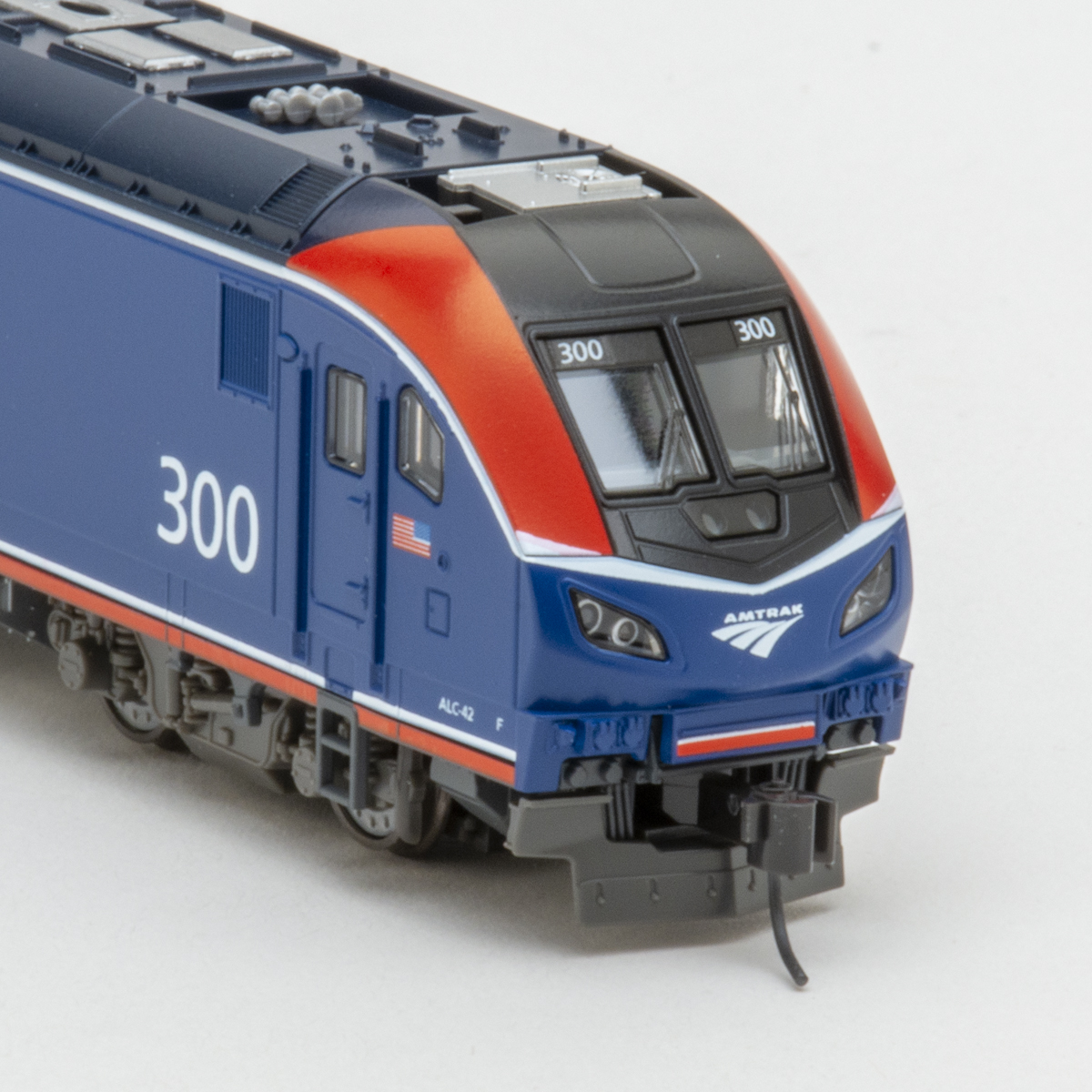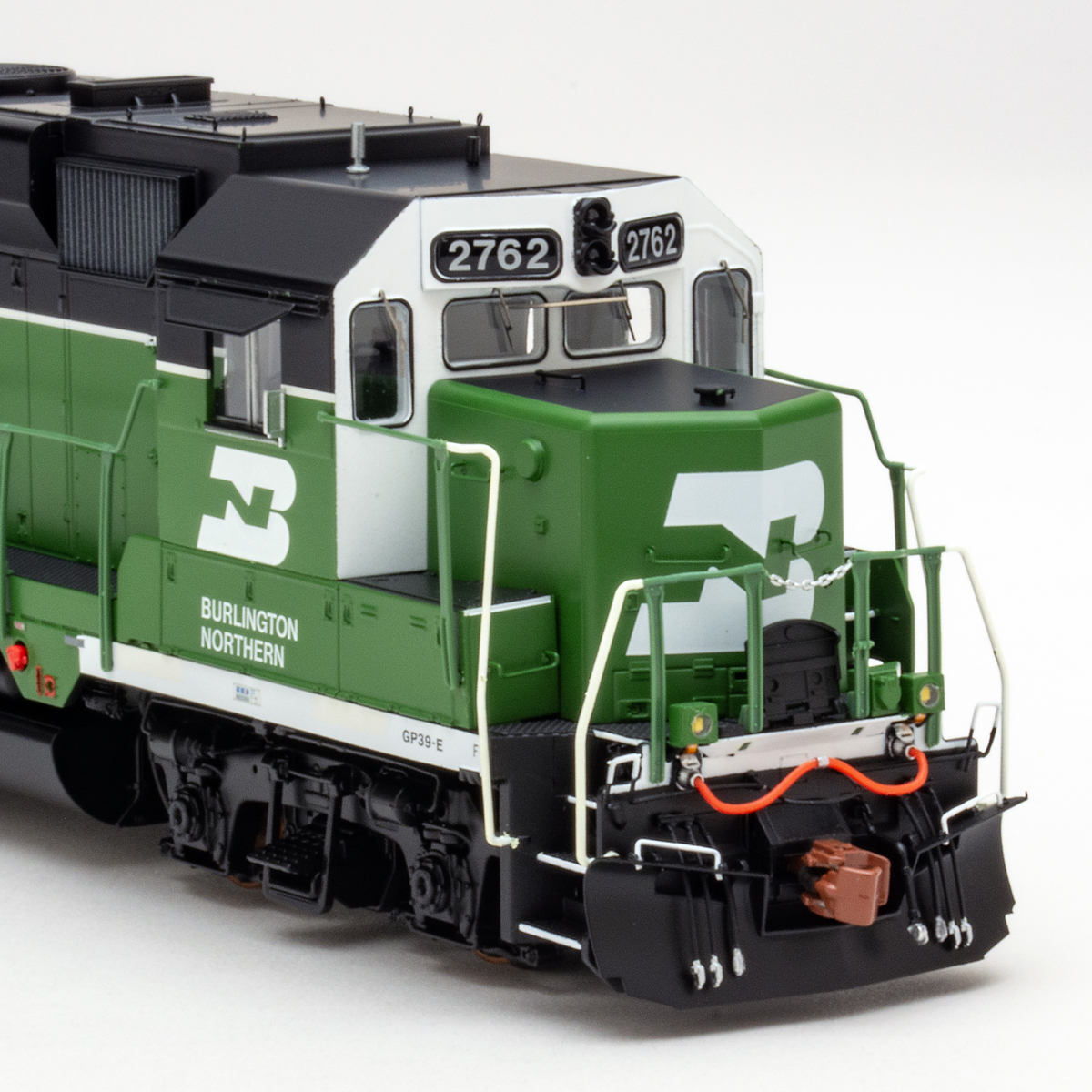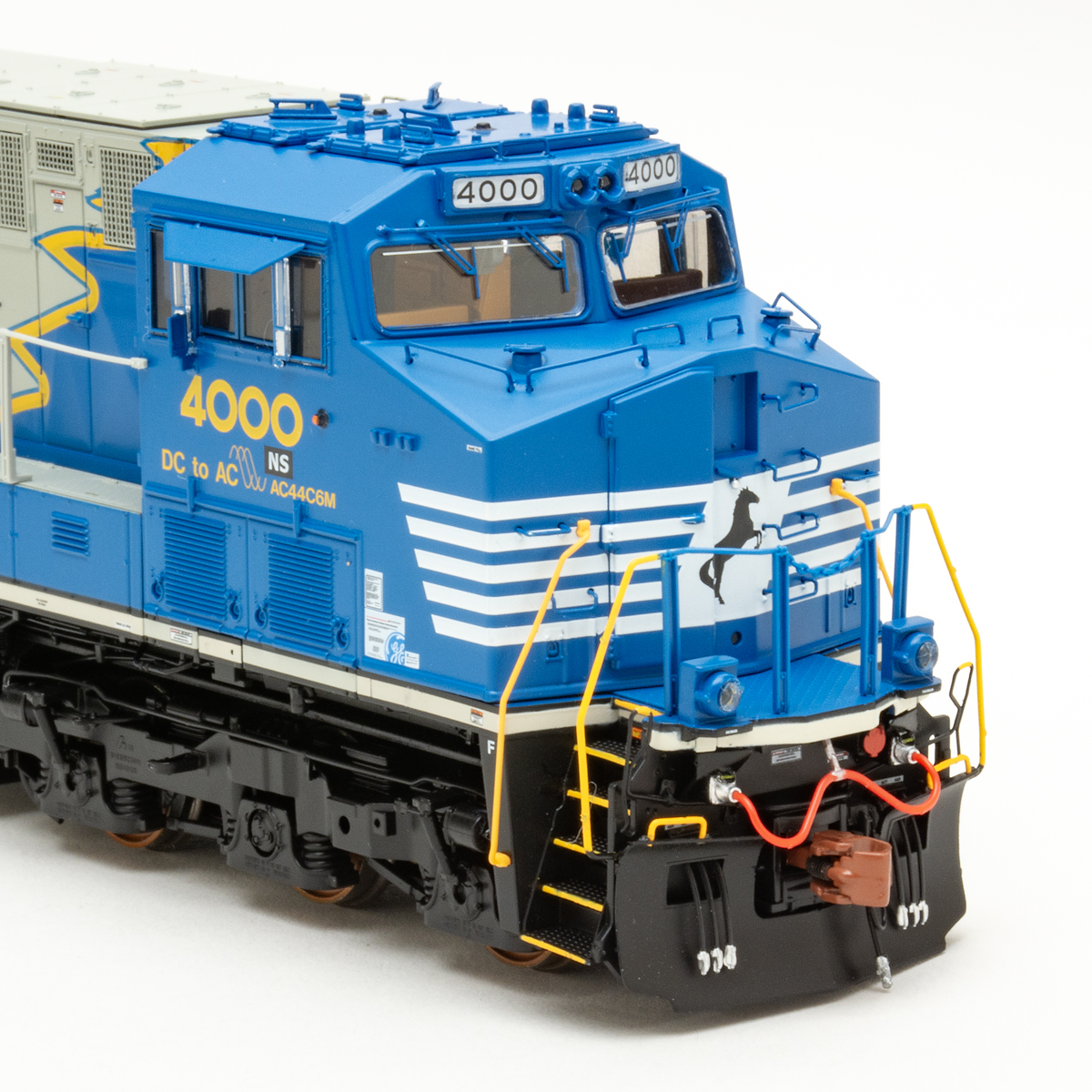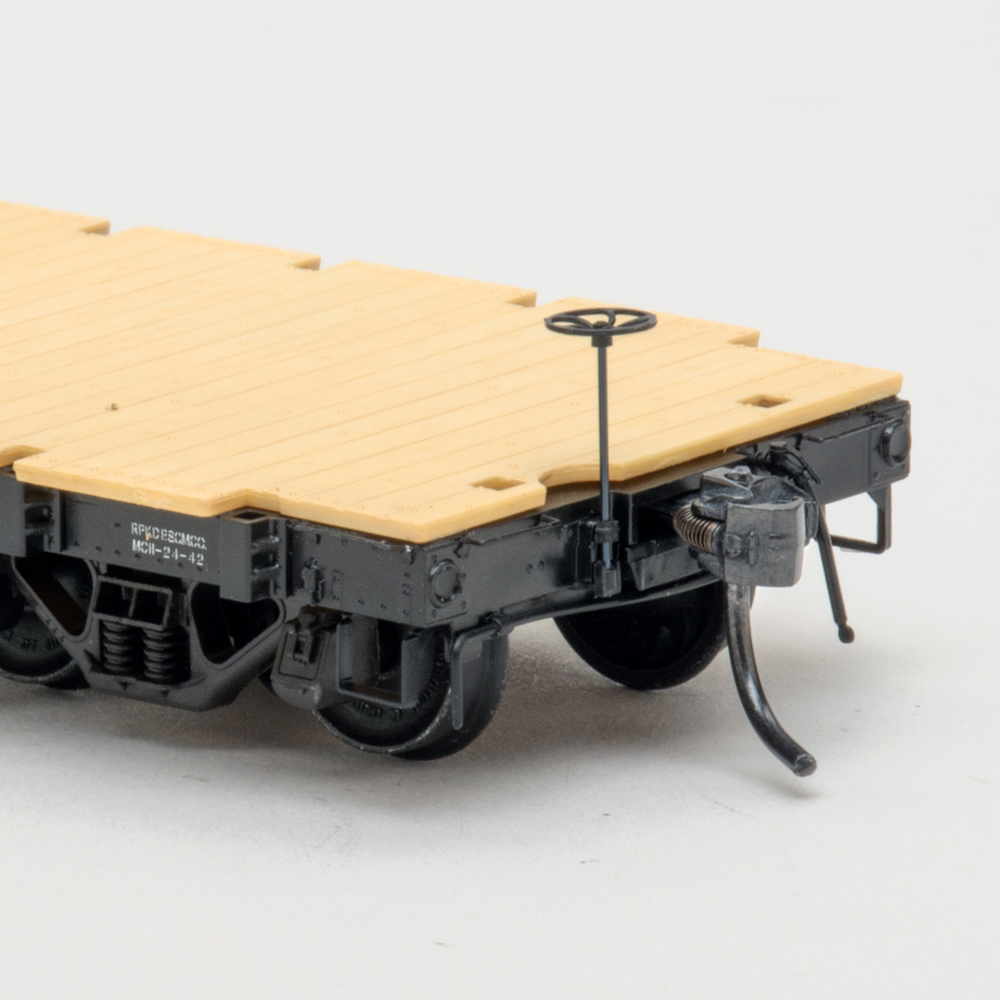While Broadway Limited’s new HO scale Norfolk & Western Class A may not have the 475-ton heft of its prototype, I couldn’t help but remember my first meeting with an A when I removed the model from the box. Having reviewed the firm’s New York Central Hudson, I expected the A to be nice, but even so I was impressed. It’s a very, very good-looking model, and the many features that Broadway Limited (BLI) has built in only enhance it. It looks great on a shelf, but it’s even more fun to see and hear the 2-6-6-4 in action.
The prototype
The Norfolk & Western’s Class A simple-articulated locomotives were amazing achievements in their time, and even today the power and speed they developed are remarkable. With a starting tractive effort of 118,000 pounds and 6,300 horsepower, they regularly hauled trains of 13,000 or more tons and could reach at least 70 mph with a train. (Legend has it that some reached 90 mph on the main line south of Columbus, Ohio.)
The ultimate locomotive? That depends on your criteria, but the A certainly had few peers, then or now. The N&W built them in five batches: 2 in 1936, 8 in 1937, 15 in 1943, 10 in 1944, and 8 in 1949-50. Engine 1218 dates from 1943.
Features aplenty
The model has a remarkable number of audio and operational features when used in a Digital Command Control (DCC) environment, including load- regulated operation and a full range of sounds, from chuff, whistle, and bell all the way through a Doppler-effect whistle and the somewhat foreboding “coupler crash.”
When you program the locomotive, the sound system announces the number of the configuration variable (CV) being set. Interestingly, the locomotive’s circuitry supports 12 functions, but the locomotive uses only functions F1-F8 as delivered. That would appear to leave room for additional functions on future releases such as uncoupling or variable-output smoke. Ambitious modelers could easily add a Seuthe smoke unit to the model, because its design leaves space for one inside the boiler beneath the stack.
Broadway Limited does not confine features like sound and load-regulated operation to digital operation, however. The sound system (by QSI) also functions in the analog (regular DC) mode, and most sounds can be controlled via back-and-forth movements of the direction switch (don’t worry, the locomotive does not change direction during these movements). The locomotive automatically recognizes whether it’s operating on a DCC or DC layout.
The locomotive also has a built-in momentum (or inertia) feature in analog mode, as well as what Broadway calls “regulated throttle control.” The regulated control, which maintains the locomotive’s speed over rough trackwork or up and down grades, is the analog equivalent of the load regulation the locomotive has in digital mode. Think cruise control and you have it.
Because full track voltage is not constantly present in analog mode, the locomotive’s circuitry “reserves” a few volts below track voltage to provide this feature. (For example, if you set the power pack output at 12 volts, the circuitry might send only 10 to the motor, so that it can increase motor voltage if the back EMF signal from the motor drops.) However, to permit the locomotive to still reach its top speed, the voltage at which it will reach top speed can be set by the user. If you set the locomotive to reach top speed a few volts below the full voltage of your power pack, the locomotive will always have a bit of reserve voltage.
Included with the locomotive are a tool for adjusting sound system volume (the volume level is also programmable), a pair of extra traction tires, and an operating knuckle coupler for use when doubleheading or switching.
Broadway’s Class A has an injection-molded plastic boiler and cast-metal frame. Three small, neatly hidden Phillips-head screws hold the boiler to the frame. The injection-molded plastic tender body is a press fit on the tender frame. A two-position drawbar and six-wire tether connect the locomotive and tender. A plug on the tether fits into a receptacle under the cab.
A single can motor with twin flywheels is mounted in the middle of the frame and drives each engine via shafts, worms, and worm gears. The mechanism is actually very similar to that of most model diesels with a recommended minimum radius of 22″. To allow the locomotive to negotiate these tight curves, both engines pivot (on the prototype, only the front engine pivoted). The driver centers are black, and the rims/tires are a medium gray.
The detailing is crisp and the many separate details are neatly applied. The only fault I noted was a very slight parting line at the top of the boiler. Your scale crew members will appreciate the opening cab windows and roof vents. The satin-finish black paint on the boiler and tender is very smooth, and the lettering is sharp.
The model is detailed to represent no. 1218 during her excursion-train career, including the solid pilot and rebuilt tender used during the postwar years and also the turret cover that it did not have until its restoration. It correctly has four (!) safety valves, but they are plated a bright brass color. I could find no evidence that these valves were plated during either of the locomotive’s careers. (Soaking the valves in Clorox should remove the plating so that paint will adhere. Remember to remove them from the locomotive first.) The pilot has a hidden scale coupler that swings up into place for display.
The scale fidelity of the model is excellent, though its designers made a few compromises to allow operation on model track. The overall wheelbase is lengthened slightly (approximately 14 scale inches), and the spacing between the engines is slightly wider than scale. Similarly, the lead truck is moved slightly forward. The boiler is lengthened slightly to disguise these changes. Without a set of drawings (from Model Railroader Cyclopedia Vol. 1: Steam Locomotives) and a scale ruler, however, I couldn’t spot any of them.
This is a big, powerful steam locomotive. It’s large, too. And did I mention that it’s big? That’s not to say that the model won’t negotiate tight curves – it will, and it tracks well through even no. 4 switches – but it looks a bit, well, funny when doing so. I found that I needed to move the drawbar connection to the outer position for the locomotive to negotiate curves of 26″ radius or less. The position of the tender’s cable is also critical – make sure that it doesn’t restrict free movement. I had a few derailments until I got the cable into a position where it didn’t interfere.
The class A model’s tractive effort is truly remarkable, developing a 12-ounce drawbar pull which is equivalent to a prototype-like 170 free-rolling cars on straight and level track. That’s 4 ounces more than the pulling power of any other HO locomotive we’ve tested in the past three years.
The mechanism on our sample was very quiet in forward operation but somewhat less in reverse. The sound system functioned well and its whistle has the distinctive N&W sound. The system can develop a substantial volume of sound – approximately 84 dB at 3 feet with the system at full gain, the locomotive at full speed, and the whistle blowing. I did hear what was either one of the speakers vibrating or a resonance in the tender at full volume, but the fidelity at lower gain settings was quite good. In my experience, most users prefer lower sound levels anyway.
Low-bass response is naturally limited by the size of the twin speakers, but I would rate it the best of any HO locomotive I’ve heard. (Here’s a project for someone who’s better with electronics than I am- what about using the new NMRA bidirectional DCC standard to send a locomotive-speed signal back to the DCC system, which could then be routed to a circuit that would send an audio signal to an under-layout subwoofer? Truly low bass is omnidirectional, so the overall effect could be pretty convincing.)
Broadway Limited’s new locomotive is a well-engineered, good -performing, accurate replica of a remarkable prototype. While a few of its details could be rendered more finely, it remains a fine locomotive-and it’s only the firm’s second model ever. Its operating qualities (including a speed range that’s dead on the money) and sound in digital operation are excellent, and its combination of sound and features in analog operation is unmatched. Do you need one? That depends on what you model. Once you see and hear one in action, however, I suspect you’ll want one.
Price: $499.99
Manufacturer:
Broadway Limited Imports
P.O. Box 376
Ivy, VA 22945
www.broadway-limited.com
Description:
Plastic and metal ready-to-run articulated steam locomotive with sound effects
Features
DCC decoder built in with onboard synchronized sound in DCC and analog (DC) modes
Directional, constant headlights plus firebox glow
Drawbar pull: 12 oz.
Dual flywheel drive
Weight:
26 ounces (locomotive)
8 ounces (tender)
Magnetic knuckle couplers
Minimum radius: 22″
RP25 contour wheelsets, in gauge
Traction tires





